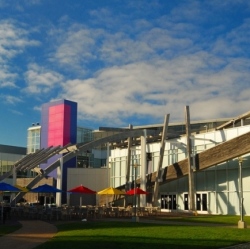
Google’s self-driving cars have far more experience than any human on the planet; the fleet is driving as many miles in a single day as a typical American drives in a year. And as we know, the cars are also adding features all the time to help them learn how to drive even better and more like humans.
In fact, Google had recently implemented a capability for its cars to hug the shoulder a bit on Mountain View’s extra-wide right-hand lanes, allowing it to behave a little more like its fellow drivers might. It’s the same reasoning that allows a Google car to break the law to cross a yellow line to get around an improperly parked car, for example.
But there are plenty of examples where Google’s car isn’t human enough. Urmson showed how the car tried to move out of another car’s blind spot on a motorway, but ended up slowing its speed too much in the process, eventually moving into the blind spot of the other car. This is what happened on Valentine’s Day, said Urmson, “our car making an assumption about what the other car was going to do. This what driving is about.”
Even so, Urmson remains confident that Google is a better driver than you. Urmson showed an instance where a bike going the wrong way at night suddenly zoomed through an intersection. The car stopped. But Urmson said he’s watched the footage dozens of times, and he believes the cyclist would probably not have been seen by a human driver. “I am convinced if I was behind the wheel, I would have hit him.”
Urmson acknowledged that if you read about self-driving cars you might believe they’ll be here in three years or 30 years, and the answer is both. The way the tech will roll out is most likely in the way Google has rolled out the technology: First motorway driving (which is easier), then boulevard driving, and then the more complicated, active urban streets.
“It’s too important not to move forward with the technology. “I know that the net benefit will be better for society.”
